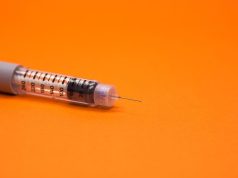Systemic β-blocker use linked to lower IOP; ACEI, ARB, statin, sulfonylurea linked to higher IOP
FRIDAY, Jan. 13, 2017 (HealthDay News) — Some systemic medication has a modest effect on intraocular pressure (IOP) among Asian patients with glaucoma, according to research published online Jan. 12 in JAMA Ophthalmology.
Henrietta Ho, M.B.B.S., from the Singapore Eye Research Institute, and colleagues conducted a post-hoc analysis to examine the correlation between systemic medication use and IOP in a multiethnic Asian population. Data were analyzed from 8,063 participants from the Singapore Epidemiology of Eye Diseases study with glaucoma from three racial/ethnic groups: Chinese (2,680 participants), Malays (2,757 participants), and Indians (2,626 participants). The correlations between IOP and medications were evaluated in models adjusted for age, sex, body mass index, ethnicity, and the medical condition for which the medication was taken.
The researchers observed an independent association for systemic β-blocker use with an IOP of 0.45 mm Hg lower. Conversely, there was a correlation for higher mean IOP with use of angiotensin-converting enzyme inhibitors, angiotensin receptor blockers, statins, and sulfonylureas (0.33, 0.40, 0.21, and 0.34 mmHg higher, respectively). There was no interaction noted between medication classes for additive, synergistic, or antagonistic effects on IOP.
“At this point, the effect of systemic medication on IOP in eyes with glaucoma is not well elucidated but important,” the authors write. “Our findings indicate that patients with glaucoma may potentially be at risk of higher or lower IOP, depending on medication class, and this would in turn affect management of IOP control.”
Full Text (subscription or payment may be required)
Editorial (subscription or payment may be required)
Copyright © 2017 HealthDay. All rights reserved.








